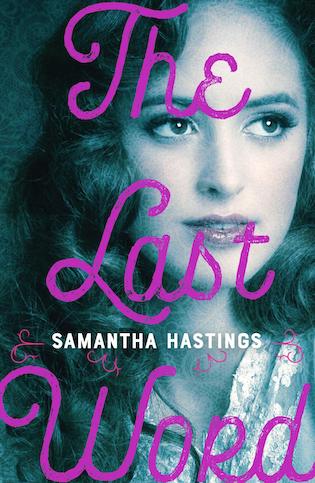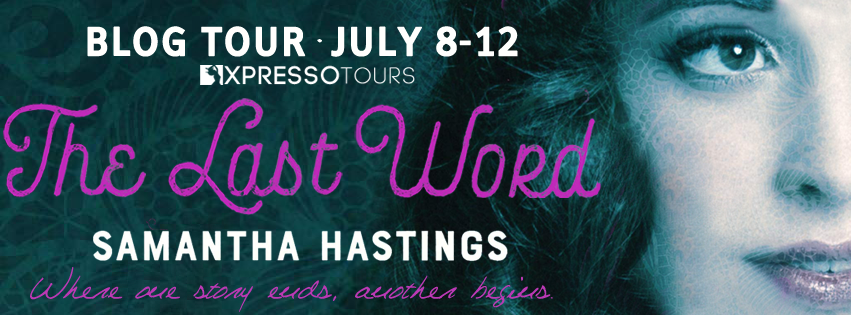
The Last Word by Samantha Hastings
Published by: Swoon Reads
Publication date: July 9th 2019
Genres: Historical, Romance, Young Adult
Set against the smoky, gaslit allure of Victorian London, this sweetly romantic historical debut is full of humor and stars a whip-smart female heroine ahead of her time.
Where one story ends, another begins.
1861. Miss Lucinda Leavitt is shocked when she learns the author of her favorite serialized novel has died before completing the story. Determined to learn how it ends, Lucinda reluctantly enlists the help of her father’s young business partner, Mr. David Randall, to track down the reclusive author’s former whereabouts.
David is a successful young businessman, but is overwhelmed by his workload. He wants to prove himself to his late father, as well as to himself. He doesn’t have the time, nor the interest, for this endeavor, but Lucinda is not the type to take no for an answer.
Their search for the elusive Mrs. Smith and the rightful ending to her novel leads Lucinda and David around the country, but the truths they discover about themselves—and each other—are anything but fictional.
Chosen by readers like you for Macmillan’s young adult imprint Swoon Reads, The Last Word by debut author Samantha Hastings is a fun yet intellectual romp through Victorian London—the perfect book for book-lovers.
Goodreads / Amazon / Barnes & Noble / iBooks / Kobo
10 Tips for Becoming a Better Writer
1. The opening line
should invite the reader into your story. Does your opening line
capture the tone of your story? Does it have a hook or something
unexpected to grab the reader’s attention? If not, get out a
Welcome mat and start working on making that first sentence
the best in your book.
2. Show don’t
tell. Telling: summarizes, names emotion, names a sense, and names an
action. Showing: dramatizes like a movie scene, uses dialogue,
sensory language, and the details to help the reader experience the
same feeling.
3. Make proactive
characters. Does your character act or only react? Give your
character goals and motivations. Make sure they have plenty of
obstacles to use their wits and skills. And remember that failure
allows for great character development.
4. Make your
antagonist as interesting as your protagonist. They need to be a
worthy foe. You need to know their beliefs, loyalties, traits, and
emotions. What are they willing to sacrifice to accomplish their
goal? Your antagonist should also show character growth—even if
it’s darker growth.
5. Raise the stakes,
both internally and externally for your character. To do this you
need to be able to answer these following questions: What is the
foundational stone of your character’s belief system? How much can
the character withstand before abandoning their beliefs? What
sacrifices does your character make for the goal?
6. Are you a plotter
or a pantser? Whether you’re a plotter who uses an outline to
create a structure for your story, or a panster who discovers the
story while they write it, make sure that you evaluate your overall
plotting. Is it too slow in some places? Does it sag in the middle?
Is the end satisfying? I highly recommend watching Dan Well’s
Youtube videos about story structure.
7. Does your book
have a theme? Use the Rule of Three to find out: if a symbol is used
once it’s interesting, twice it’s a pattern, and three times it’s
a theme. You can use call backs to previous scenes, echoes, and
mirrors to help your reader remember your theme.
8. Take out any
dialogue tags that you don’t need. Only use a dialogue tag if the
identity of the speaker is unclear.
9. Variety is the
spice of reading. Watch out for words that you use too many times and
take them out; replacing them with synonyms or just get rid of them.
Vary your sentence lengths (make some shorter and some longer).
Change up the structure of your sentences (if you start with a noun
at the beginning of every sentence it’s really boring for the
reader). Use different paragraph lengths (this will also help keep
your reader’s interest).
10. Read your entire novel—by just reading the first and last line
of every chapter. Do you have mini-cliff hangers that keep the reader
turning to the next chapter? Are your best sentences in the most
effective positions?
Author Bio
Samantha Hastings has degrees from Brigham Young University, the University of Reading (Berkshire, England), and the University of North Texas. She met her husband in a turkey sandwich line. They live in Salt Lake City, Utah, where she spends most of her time reading, eating popcorn, and chasing her kids. The Last Word is her debut novel.
Tour-wide giveaway
Open to US/CAN






Thanks for hosting today, Jess!
ReplyDeleteYou're welcome! :)
Delete